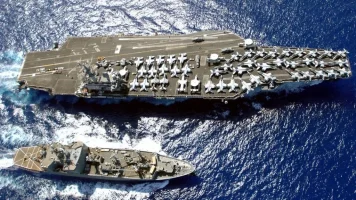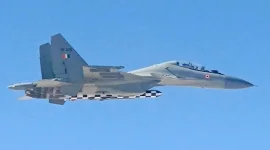- Views: 1K
- Replies: 10

The Indian Navy is a key player in the development of the Long-Range Anti-Ship Missile (LRAShM), a cutting-edge weapon system created by the Defence Research and Development Organisation (DRDO).
Although initially intended for naval deployment, the LRAShM's considerable size and weight make it unsuitable for India's primary warships. However, the Indian Navy has recognized its strategic value and is pursuing a land-based deployment strategy to enhance coastal defence and deterrence in the Indian Ocean Region (IOR).
This shift in deployment strategy is driven by the missile's unique capabilities. The LRAShM utilizes a sophisticated hybrid propulsion system, combining rocket boosters for initial launch with a scramjet engine for sustained hypersonic flight. This technology allows the missile to achieve speeds exceeding Mach 5, making it extremely difficult to intercept.
With a range of approximately 1,500 kilometers, the LRAShM can strike targets deep within enemy territory or far out at sea, delivering a powerful payload capable of neutralizing even large naval vessels like aircraft carriers.
Land-based deployment along the Indian coastline offers several strategic advantages. Firstly, it allows for the coverage of vast stretches of coastline without relying on naval platforms, maximizing the missile's impressive range.
Secondly, it acts as a potent deterrent against potential adversaries considering naval aggression in the IOR. By establishing LRAShM batteries along its coast, India projects a strong defensive and offensive capability, discouraging hostile actions within its maritime domain.
Furthermore, the LRAShM complements the Indian Navy's existing capabilities. It provides the ability to engage enemy fleets at distances beyond the reach of traditional naval assets, effectively acting as a force multiplier.
While not deployed on ships, the LRAShM can protect naval bases and vital maritime chokepoints from enemy warships, indirectly safeguarding India's frontline naval assets.
However, this strategy also presents challenges. Deploying the LRAShM requires significant infrastructure development along the coast, including secure storage facilities, transportation networks, and potentially the expansion of radar and communication systems.
Integrating the land-based missile system with the Navy's existing sea-based operations will necessitate new tactical approaches and potentially a restructuring of command structures to ensure seamless coordination and effective engagement strategies.
Additionally, the advanced technology inherent in the LRAShM will likely result in substantial costs for development, production, and maintenance, requiring careful budget allocation within the Navy.
Despite these challenges, the Indian Navy's pursuit of land-based LRAShM deployments signifies a strategic move to bolster its defence capabilities and maintain a credible deterrent in the face of evolving maritime security threats in the IOR. This approach underscores India's commitment to safeguarding its maritime interests and ensuring regional stability.


